Crisp, juicy, and wonderfully refreshing — cucumbers are a favorite among home gardeners for a reason. Whether sliced into salads, pickled into tangy spears, or enjoyed straight from the vine, cucumbers are a rewarding and easy crop to grow, even for beginners. This comprehensive guide will walk you through every step of growing cucumbers successfully — from choosing the right varieties to planting, caring, harvesting, and using them.
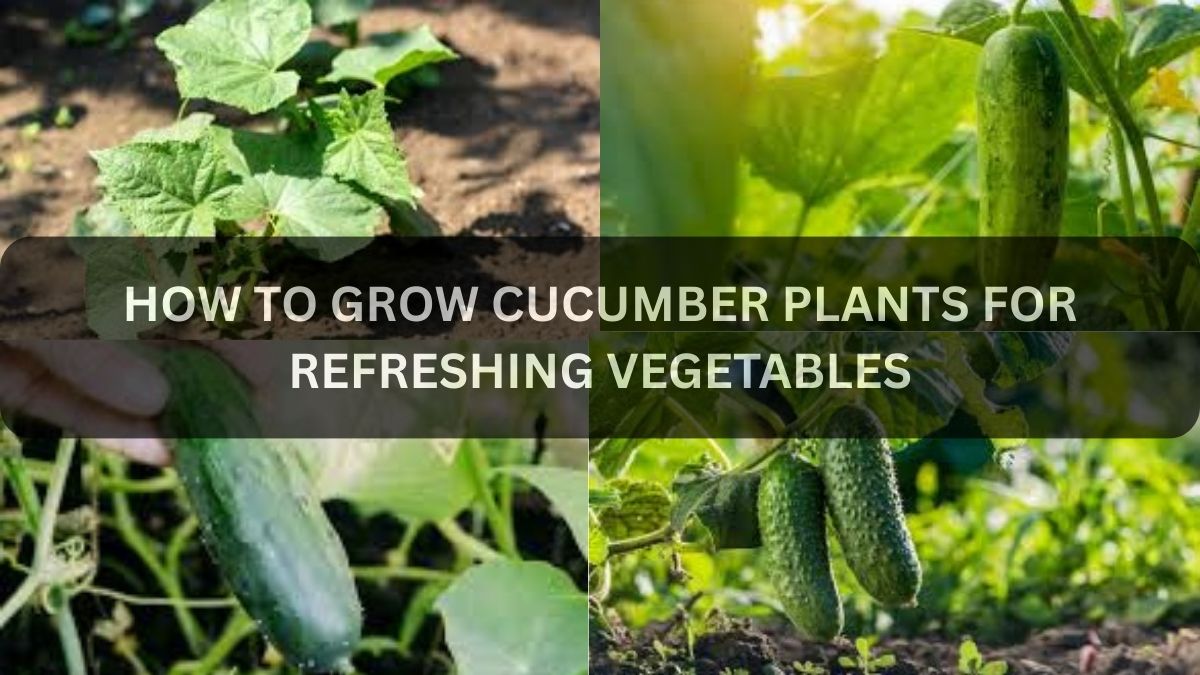
Quick Summary
| Aspect | Details |
|---|---|
| Ideal Season | After last frost; soil temp ≥ 60°F (16°C) |
| Sunlight | Full sun (6–8 hours daily) |
| Soil Requirements | Well-drained, rich in organic matter, pH 6.0–7.0 |
| Top Varieties | Marketmore 76, Boston Pickling, Picklebush, Straight Eight |
| Watering | 1–2 inches/week; keep soil evenly moist |
| Fertilizer | Balanced at planting; switch to phosphorus-rich at flowering |
| Pest Management | Row covers, neem oil, hand-pollination |
| Harvest Period | Check daily; harvest slicing at 6–8″, pickling at 2–4″ |
| Storage Tips | Refrigerate unwashed in perforated bags |
| More Info | https://www.almanac.com/plant/cucumbers |
Why Grow Cucumbers in Your Garden?
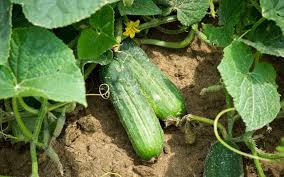
Growing cucumbers at home has multiple advantages:
-
Unmatched Freshness: Store-bought cucumbers often sit for days before reaching your table. Homegrown cucumbers are harvested at their peak ripeness, resulting in better texture and flavor.
-
Pesticide-Free Produce: You control what goes into your soil and onto your plants, leading to cleaner and safer produce.
-
Tailored to Your Taste: Choose varieties specifically suited to slicing, pickling, or even container gardening.
Popular Cucumber Varieties
Cucumbers come in two main categories: slicing cucumbers (for fresh eating) and pickling cucumbers (ideal for preservation).
Top Slicing Varieties
-
Marketmore 76: Reliable, disease-resistant, and smooth-skinned.
-
Straight Eight: Classic heirloom producing crisp 8-inch fruits.
-
Burpless Beauty: Milder taste with less bitterness.
Top Pickling Varieties
-
Boston Pickling: Small, firm, and perfect for crunchy pickles.
-
National Pickling: Fast-growing and prolific.
-
Picklebush: Compact variety, ideal for containers or small gardens.
Tip: Choose bush or dwarf varieties if space is limited or you’re growing in pots.
When and Where to Plant Cucumbers
Cucumbers thrive in warm conditions and should only be planted when all danger of frost has passed.
Planting Time
-
Outdoors: 1–2 weeks after the final frost; soil temperature should be at least 60°F (16°C).
-
Indoors: Start seeds 3–4 weeks before the last frost date for transplanting.
Sun & Soil Requirements
-
Sunlight: Full sun (minimum of 6–8 hours daily).
-
Soil: Loose, well-draining, and rich in organic matter; pH between 6.0–7.0.
Preparing the Soil for Cucumbers
Good soil preparation sets the foundation for a healthy harvest.
Steps to Prepare Soil
-
Loosen soil to 8–12 inches deep.
-
Mix in compost or well-aged manure.
-
Add a balanced 10-10-10 fertilizer before planting.
-
Use raised beds or containers if the ground is heavy or poorly draining.
How to Plant Cucumbers
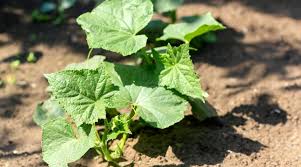
You can either direct sow cucumber seeds into the ground or transplant young seedlings.
Direct Sowing
-
Plant seeds 1 inch deep, spacing them 12–18 inches apart.
-
If planting in hills, space hills 3–5 feet apart.
-
Thin seedlings to 2–3 strong plants per hill.
Transplanting
-
Start indoors in biodegradable pots.
-
Harden off seedlings before transplanting.
-
Space them similar to direct sowing.
Trellising for Space Efficiency
-
Ideal for vertical gardening and cleaner fruit.
-
Plant 8–12 inches apart along the base of a trellis.
Watering and Mulching
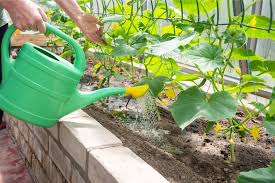
Cucumbers are moisture-loving plants.
Watering Tips
-
Water deeply (1–2 inches per week).
-
Focus water at the base to avoid fungal diseases.
-
Avoid drought stress to prevent bitter fruits.
Mulching
-
Apply 2–3 inches of straw, compost, or grass clippings.
-
Helps retain moisture and reduce weeds.
Fertilizing Your Cucumber Plants
Cucumbers benefit from consistent feeding throughout the season.
Fertilization Schedule
-
At Planting: Use a balanced fertilizer or compost.
-
Midseason (vining stage): Side-dress with compost or fertilizer.
-
Flowering stage: Switch to a fertilizer higher in potassium and phosphorus to boost fruiting.
General Plant Care and Maintenance
-
Weeding: Regularly remove weeds to avoid competition for nutrients.
-
Training Vines: Secure vines to trellises with soft ties.
-
Pollination: If pollinators are scarce, hand-pollinate using a small brush.
Common Pests and Diseases
Pests
-
Cucumber beetles: Use row covers and hand-pick.
-
Aphids: Control with water sprays or insecticidal soap.
-
Spider mites: Manage with neem oil or water misting.
Diseases
-
Powdery mildew: Improve air circulation and apply fungicides if needed.
-
Downy mildew: Water at soil level and remove infected leaves.
-
Bacterial wilt: Prevent by controlling cucumber beetles early.
Harvesting Cucumbers
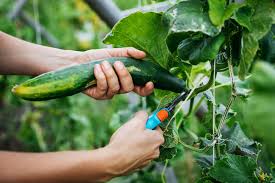
Cucumbers grow quickly, so monitor plants daily during peak season.
When to Harvest
-
Slicing cucumbers: At 6–8 inches long.
-
Pickling cucumbers: At 2–4 inches long.
Harvest Tips
-
Use sharp scissors or pruners.
-
Harvest regularly to encourage continued production.
Storing and Using Fresh Cucumbers
Storage
-
Keep cucumbers unwashed in perforated plastic bags in the fridge.
-
Store separately from apples and bananas to prevent over-ripening.
Culinary Uses
-
Fresh in salads, sandwiches, or wraps.
-
Pickled into various styles (dill, sweet, spicy).
-
Blended in cold soups like gazpacho.
-
Used in flavored water for hydration.
Frequently Asked Questions (FAQs)
1. Can cucumbers grow in pots or containers?
Yes, especially bush varieties like ‘Picklebush’. Use large containers with good drainage and place in full sun.
2. How long does it take for cucumbers to grow?
From planting to harvest, cucumbers typically take 50–70 days, depending on the variety and growing conditions.
3. Why are my cucumbers bitter?
Bitterness is often caused by inconsistent watering or temperature stress. Keep soil evenly moist and avoid prolonged dry spells.
4. Do cucumbers need pollination?
Yes. They have male and female flowers. Pollinators like bees are crucial, but hand-pollination can help if necessary.
5. How many cucumbers can one plant produce?
Each plant can produce 10–15 cucumbers, depending on variety and care.
Final Thoughts
Cucumbers are among the most satisfying vegetables to grow. Whether you’re gardening in a backyard or on a sunny balcony, with proper care, you can enjoy a consistent harvest of delicious, homegrown cucumbers all summer long. Choose varieties that suit your taste, follow simple care practices, and enjoy the crisp reward of your gardening efforts.
Click here to know more